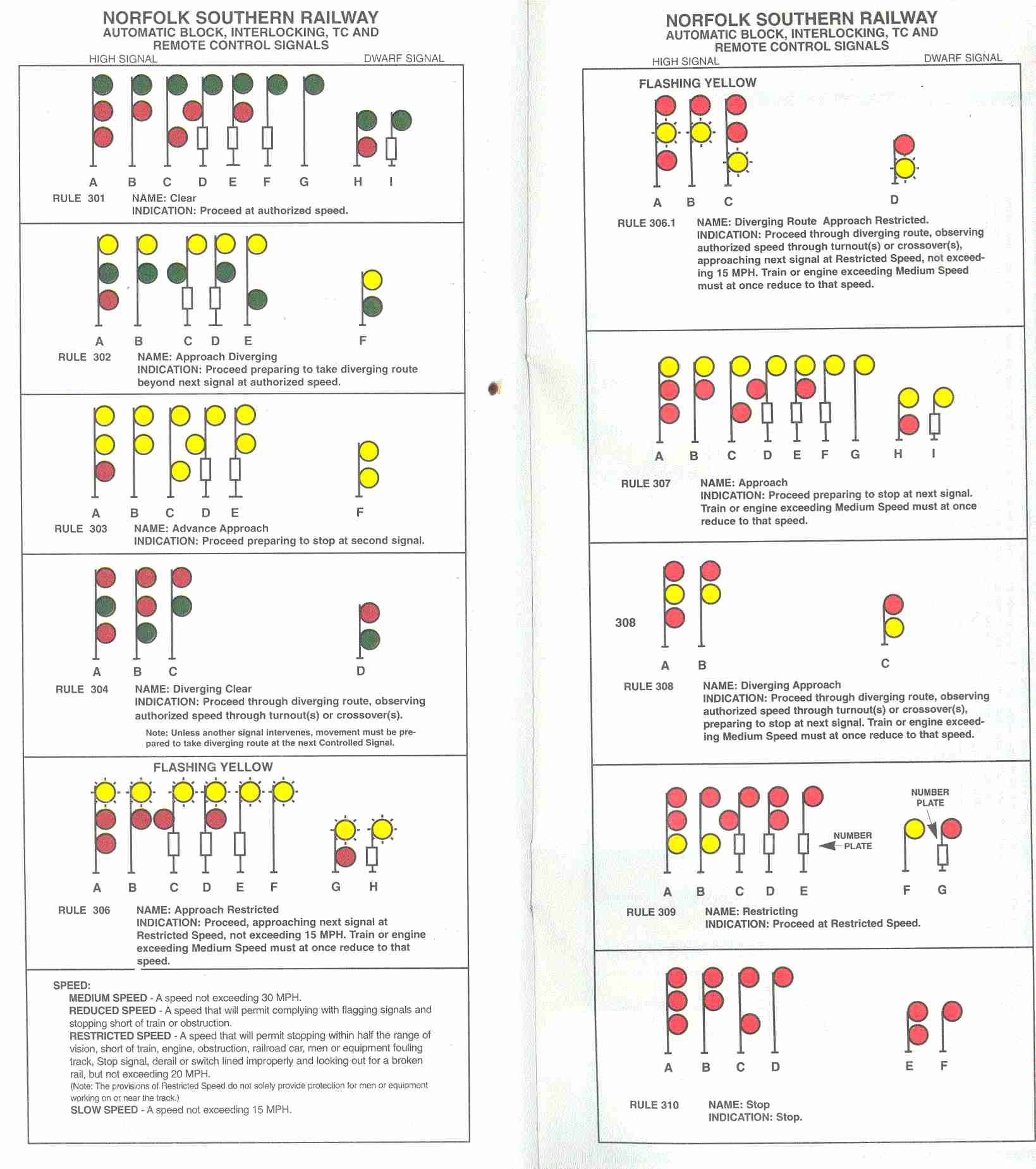It made me wonder what the signals mean.
Welcome to the complex and enlightening (pun intended) world of railway signaling.
Signaling has evolved over the past 160+ years to keep trains from colliding into one another and also to ensure they don't go too fast where they need to slow down. There are two aspects (pun
not intended) to railway signaling: the signal displays and rules themselves, and what those things actually mean to the train crew. Many of us never get that second part, since we're not on a train crew and we don't know that, for example, a crew knows a yellow signal at such-and-such place means X-Y-Z is going to happen and they'll be delayed an hour. But, the whole point of signaling is to make sure train crews have the info needed to operate their train efficiently yet safely.
Different railroads have always had their own opinions and situations about how best to utilize signaling and leverage efficiency. This is why there are many different signal systems across the U.S. I see others here have posted links to some of my signaling charts. (
My website) Anyone who has looked at those files realizes that there are multiple sets of rules presented. This is because these railroads have a family tree of ancestor railroads, with crews experienced and trained on those territories with those signals. Changing the way signals work on a whim, or simply because of a merger, is both cost-prohibitive and rocks the safety boat. When you railfan an area and try to interpret signals, you must therefore know some history about the line you're looking at to know which set of signal rules to use. Most of us railfans enjoy soaking up this information, anyway.
US (and Canadian) train signals seem to be pretty intimidating to most people, but there is a method to them, even if it's not intuitively obvious. It's my opinion that Al Krug has written the best-ever explanation about how to learn and understand signals. His website disappeared years ago, but an archive of the main signal page can be found here:
Al Krug Signals Page (Archive). I urge everyone to give it a read; hopefully you learn something.




